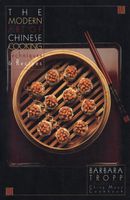Advertisement
Ham
大腺 mandarin: hwo-tway; Cantonese: fwo-toy
Published 1982
I mainly use two sorts of ham in my kitchen, one the densely smoked and salty Smithfield ham, and the other a lightly smoked and ready-to-eat Black Forest ham. A third sort, a honey- or sugar-cured ham, I use less frequently.
The Smithfield ham I use uncooked, the lean part finely slivered or minced into dishes either as a garnish or a salty seasoning (sometimes both). The fatty portion I mince and include as a richly flavored, salted fat mainly in steaming fish. In this way it most approximates the famous smoked Yunnan ham of China, which is unavailable here. Smithfield ham is sold cut into cross-slices about 1 inch thick in most larger Chinese markets, bagged in plastic so you can inspect its condition. It should be free of mold and superficial oil when you purchase it and should be refrigerated promptly when you get home. If mold should appear, you can scrape or wash it away, then safely eat what is beneath. As you use Smithfield ham, store the scraps of fat in a plastic bag in the refrigerator and keep the bone. They are invaluable as seasonings, and the bone is especially good in soup. Once bought and refrigerated, the ham will keep for a year or more.


